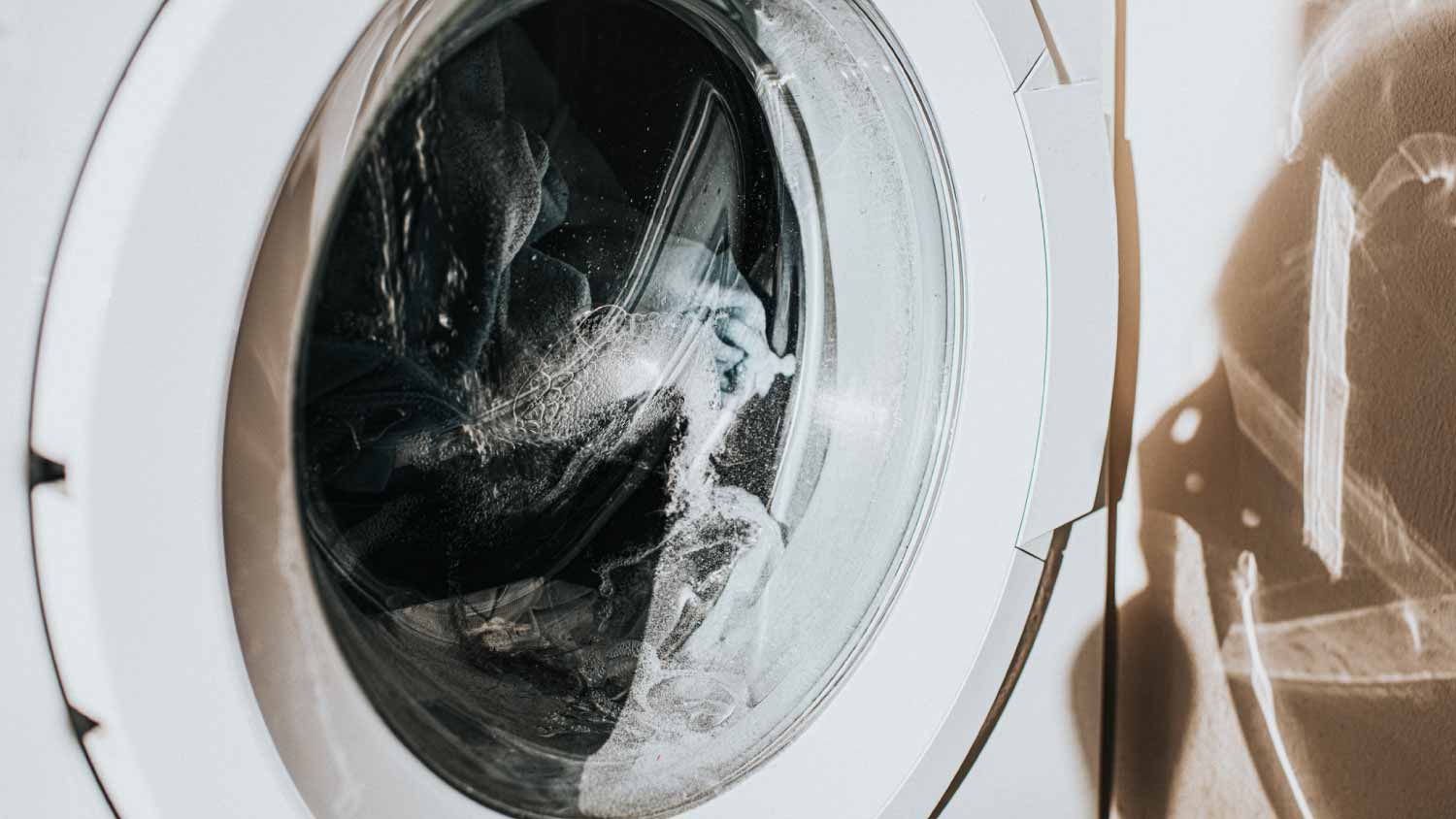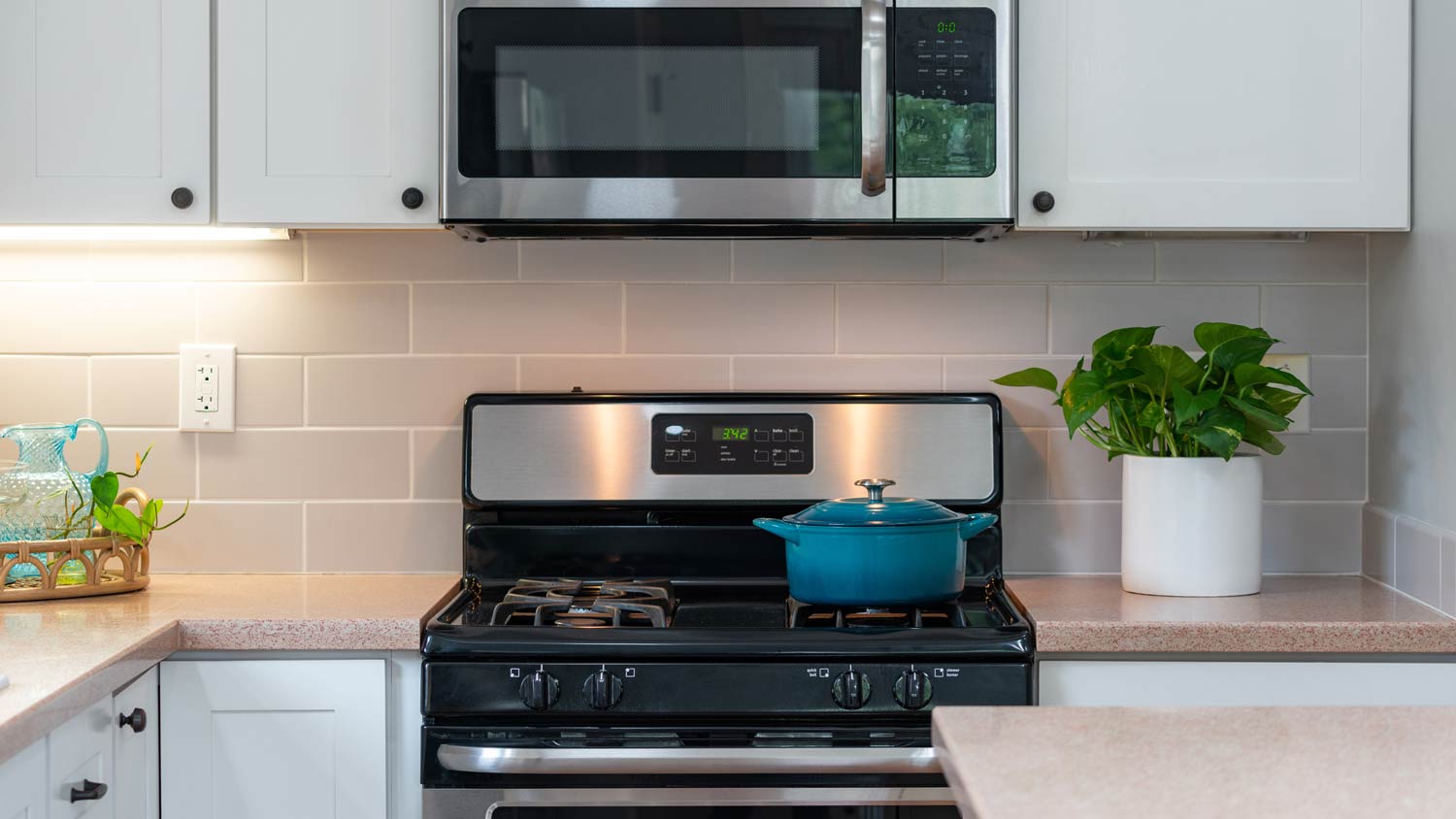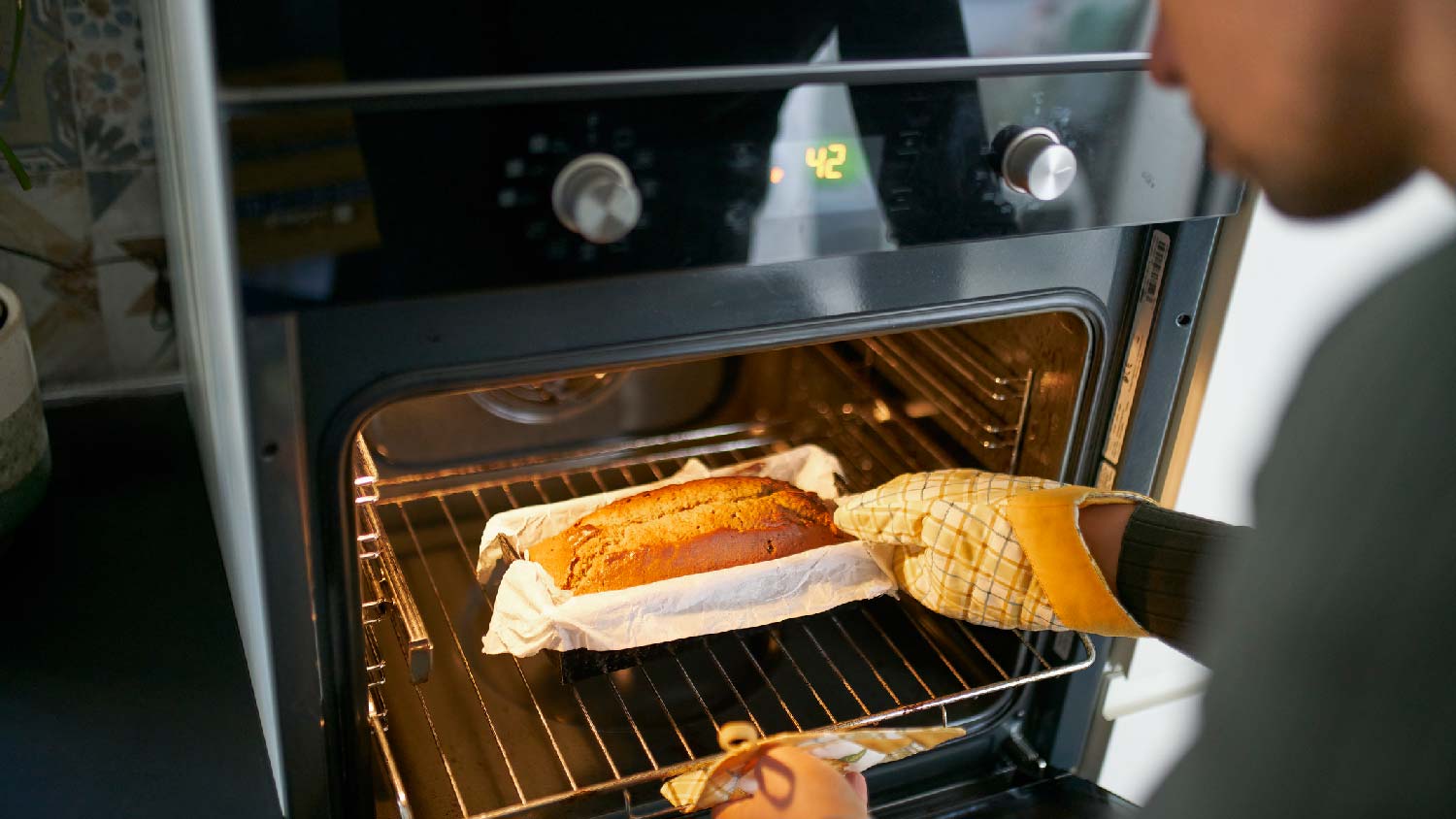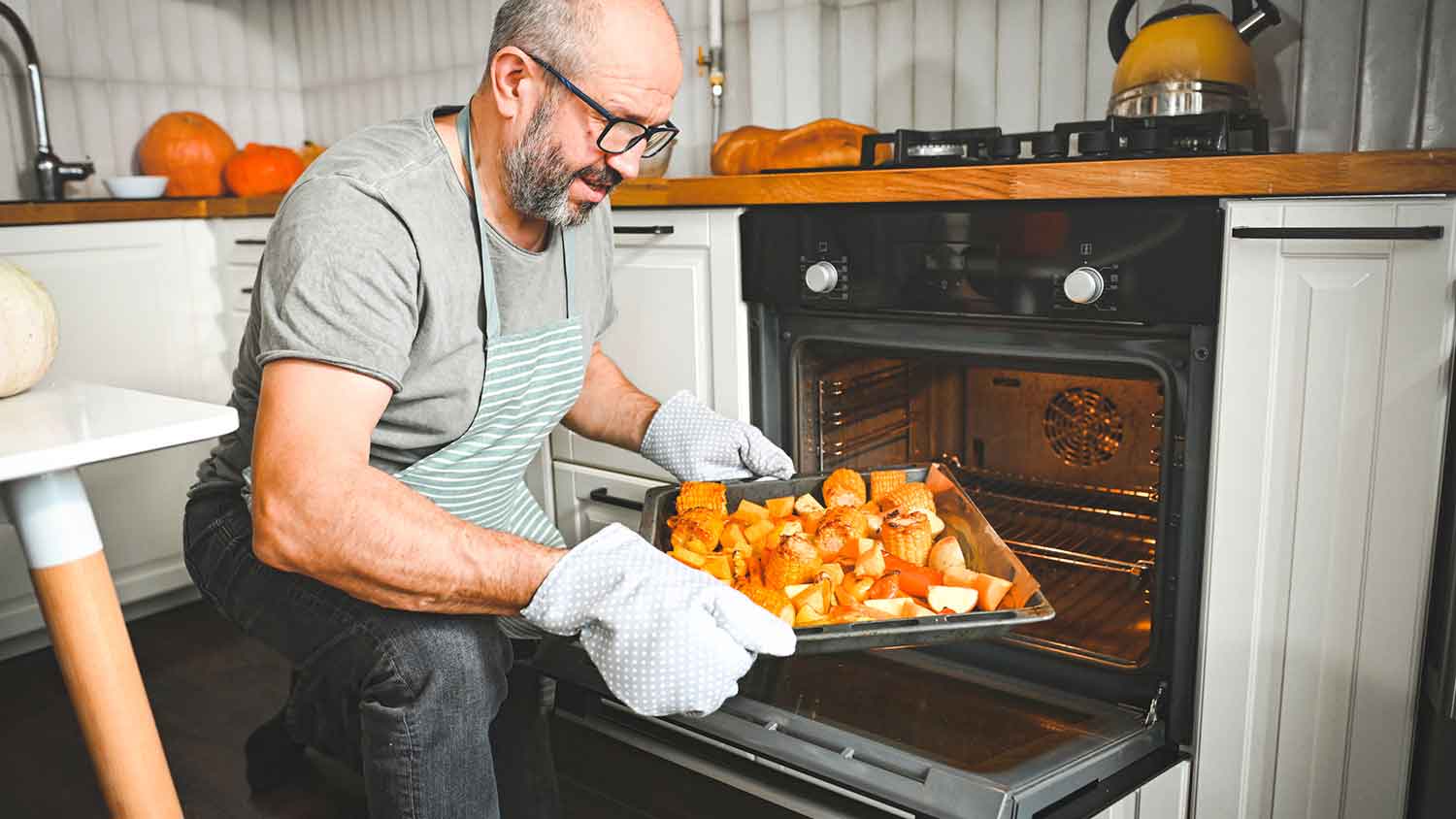How to Replace Your Washing Machine Hoses in 15 Minutes or Less
End laundry leaks for good


It’s easy to ignore a couple of water drops on the floor when you’re doing laundry. After all, you’re busy folding socks (and searching endlessly for the missing pairs). But that minor leak can quickly turn into a full-on flood if your washing machine hoses fail.
Fortunately, replacing them is a fairly easy DIY. Learn how to handle this task yourself to keep your washing machine running smoothly year-round.
Difficulty: 1/5—No experience? No problem.
Time to complete: 5–15 minutes
Cost: $10–$35
What You’ll Need
Materials
New pair of washing machine hoses
Tools
Large channel pliers
Towel
Bucket
5 Steps to Replace Your Washing Machine Hoses

1. Turn Off the Water
Start by turning off the water supply to the washing machine. Fortunately, this is easier than it may sound at first.
If your plumber installed the water supply correctly, you should have handles to turn off the cold and hot water supplies where they come out of the wall near the washing machine. (We would not recommend letting your kids know about this trick, or they’ll surely turn off the water and pretend the washer is broken to shirk their next laundry duties.)
For a rectangular handle, turn it 90 degrees.
For a round handle, turn it clockwise until you feel resistance.
2. Unplug the Washer
Unplug the washing machine from the electrical outlet. Slide the machine away from the wall a couple of feet, so you can gain access to the rear of the unit.
Place an old towel on the floor underneath the hoses, as they will drip a little bit when you remove them. You may want to place a bucket in the same area in case there is excessive water left in the hoses.
3. Disconnect the First Hose
The washing machine has two hoses, one for hot water and one for cold water. Removing these hoses is a similar process to removing a garden hose from an outdoor faucet, but the washer hoses are connected tighter, necessitating the use of pliers.
Start where the hose connects to the washer.
Adjust the opening on the channel pliers to match the size of the fitting on the first hose.
Twist it counter-clockwise until it comes loose.
Aim the loose hose at the bucket to catch any stray water.
Finally, move the pliers to the connection at the water supply and remove that fitting.
Don’t squeeze the pliers too hard, or you could bend the fitting on the washing machine hoses.
4. Connect the New Hose
All washer hoses are the same size, so your new hoses should perfectly fit the washing machine and water supply.
Add the new hose to the connectors you just removed. (Tighten the fittings first.)
Use the pliers to securely tighten the washing machine hose on both ends.
Repeat the process of removing the old hose on the other side before adding the other new hose.
By removing and adding one hose at a time, you will eliminate the risk of connecting the cold water supply to the hot water intake on the washing machine. Some washers only pull cold water into the machine, so you may not have to worry about this.
5. Turn on the Water Supply Slowly
Turn on the handles at the water supply slowly and one at a time. Watch closely for leaks as you turn the water on again. If you see a leak, turn off the water supply again and make sure you tightened the hoses properly.
Once you are confident that no leaks will occur, turn the water on full blast. Now you’re ready to begin doing laundry again. Keep an eye on the hose connections for the first few minutes the next time you run the washer, just to be certain no leaks are occurring.
DIY Swapping Out Washer Hoses vs. Hiring a Pro
You should save quite a bit of money when replacing your washing machine hoses as a DIY job versus hiring a plumber. The plumber will charge you $45 to $200 per hour, and you may have to pay for the full hour, even if the plumber only needs several minutes to complete the job.
However, if you have concerns about sliding the washer out or turning off the water source, that’s understandable. You can look into hiring a plumber in your area instead.
If doing the job on your own, you will pay roughly $10 for a pair of rubber hoses or $20 for a pair of stainless steel hoses. A pair of channel pliers, if you don’t already own them, should cost $5 to $15.
Additional Questions
How often should you replace washing machine hoses?
Replace the hoses immediately whenever you notice a tear, leak, discoloration, bubbling, or kinks. You should replace rubber or stainless steel hoses at least every three to five years, even if you don’t notice flaws.
Stainless steel hoses are less susceptible to sudden punctures or pressure leaks than rubber hoses, but both types of hoses need eventual replacement as part of the normal washing machine maintenance. Always replace both hoses at the same time, because if one hose is showing signs of failure, the other hose likely will be showing the same signs soon.
Are washing machine hoses the same on both ends?
Washing machines all use hoses with 3/4-inch fittings on either end. You should be able to connect any washer hose you purchase to your water supply and to the washing machine, as all parts are standard. You don’t have to buy hoses directly from the washing machine’s manufacturer.
How can I fix a leaking washing machine hose?
You nearly always will want to replace a leaking hose rather than trying to fix it. Once the hose is leaking, it is not worth the risk of trying to fix it. The only exception would be if the fittings are loose at the water supply or at the washer. If any of the fittings are loose, tighten them with pliers to see if that stops the leak. If not, replace the hoses immediately.





- Appliance Repair Companies
- Washing Machine Repair
- Dryer Repair
- Refrigerator Repair
- Dishwasher Repair
- Oven Repair
- Wood & Pellet Stove Repair
- Freezer Repair Services
- Wood Stove Services
- Gas Stove Repair
- Emergency Appliance Repair Companies
- Ice Maker Repair
- Gas Appliance Repair
- GE Appliance Repair
- GE Refrigerator Repair
- GE Dryer Repair
- GE Dishwasher Repair
- GE Washing Machine Repair
- Samsung Appliance Repair
- Samsung Refrigerator Repair
- Samsung Dryer Repair
- Samsung Washer Repair
- Samsung Dishwasher Repair
- Samsung Oven Repair
- Whirlpool Repair
- Whirlpool Refrigerator Repair
- Whirlpool Washer Repair
- Whirlpool Dryer Repair
- Whirlpool Oven Repair
- Maytag Appliance Repair
- Maytag Refrigerator Repair
- Maytag Washer Repair
- Maytag Dryer Repair
- Maytag Dishwasher Repair
- Kitchenaid Appliance Repair
- Kitchenaid Oven Repair
- Kitchenaid Refrigerator Repair
- Kenmore Appliance Repair
- Kenmore Dishwasher Repair
- Kenmore Washer Repair
- Kenmore Dryer Repair
- LG Refrigerator Repair
- Bosch Appliance Repair
- Kenmore Refrigerator Repair
- LG Appliance Repair Services
- GE Microwave Repair
- Electrolux Appliance Repair
- Electrolux Washer Repair
- Kitchenaid Dishwasher Repair Services
- Wood Stove Inspection
- Dishwasher Installation
- Trash Compactor Repair
- Top 6 Reasons Why Your Washing Machine Is Leaking Water
- How to Drain a Washing Machine (Front- and Top-Load)
- How Long Do Washing Machines Last? Here’s the Average Lifespan
- How to Unclog a Washer Drain: 5 Potential Methods
- Who Fixes Washing Machines? Here’s Who to Call
- How to Fix Frozen Washing Machine Pipes
- What to Do About Hard Water in Your Washing Machine
- Here Are All the Parts of a Washing Machine—and What Each One Does
- 11 Tips for Maintaining a Front-Load Washing Machine
- What to Know About Washing Machine Drain Code Requirements










